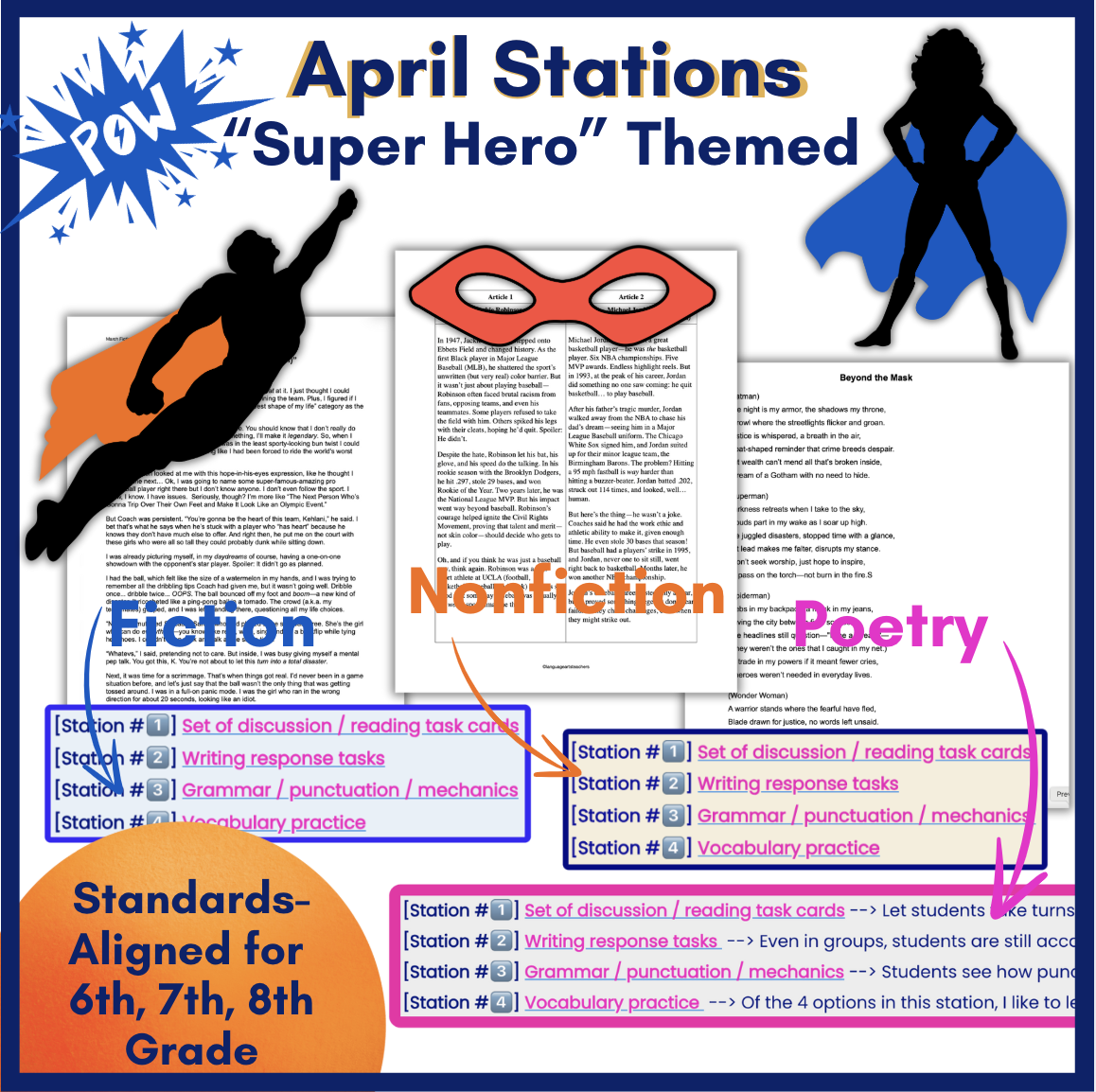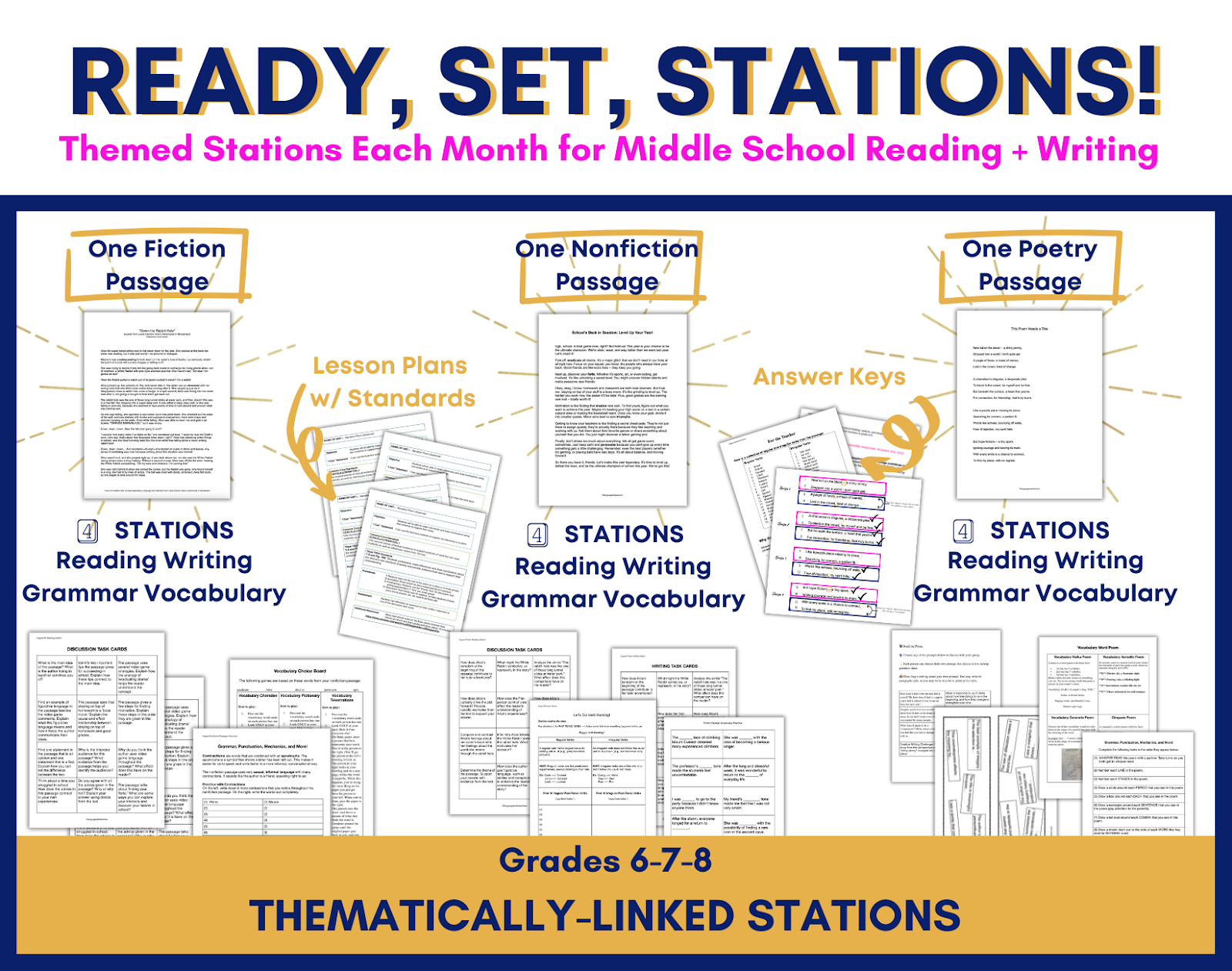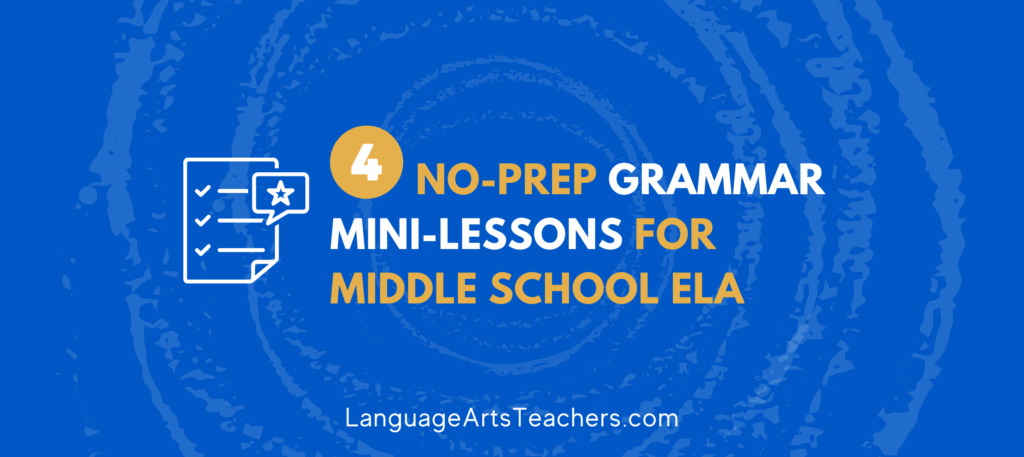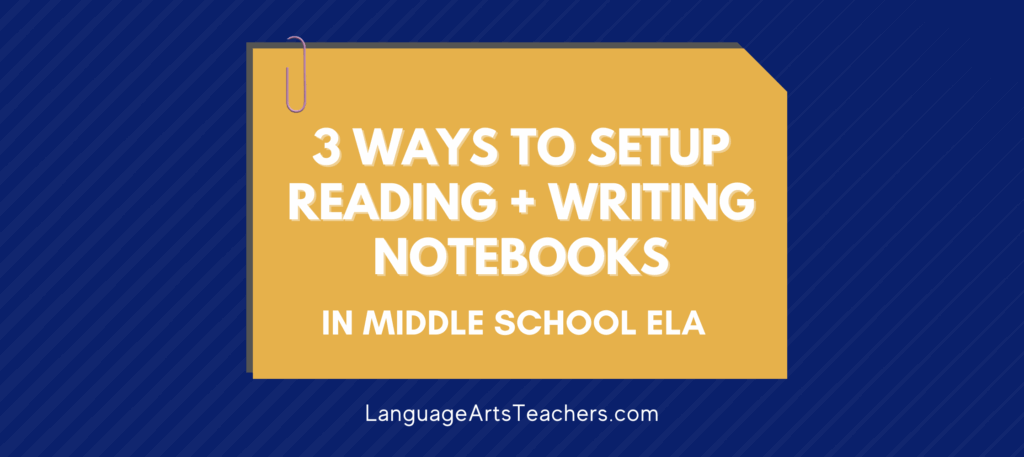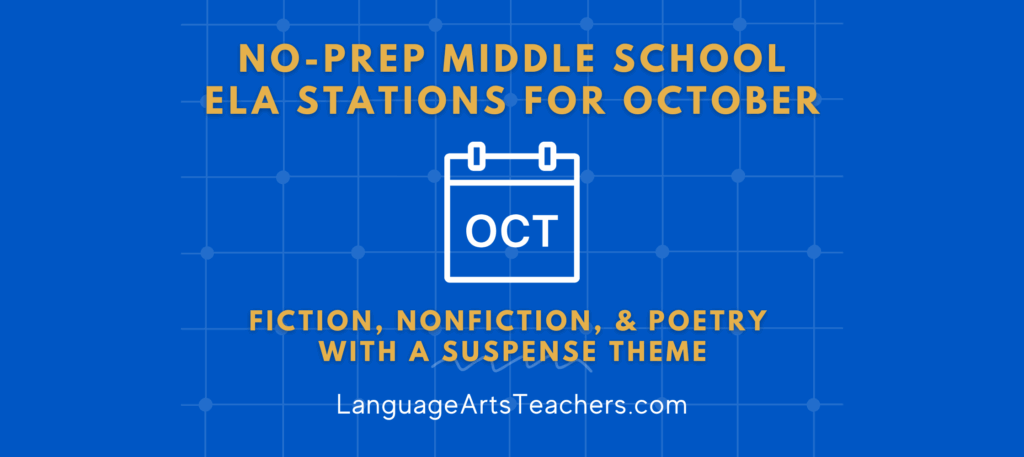Getting right to it: April 28 each year is “National Superhero Day” which allows me to leverage the magic and intrigue of fictional superheroes all month long.…
And THIS time of year? Anything to capture the 5-second goldfish attention span of my Middle School ELA/R students is welcome.
To run engaging, structured stations in April, I have three sets of reading, writing, vocabulary, and grammar stations.
Each “set” represents four stations that tie directly to a fiction excerpt, a nonfiction piece, and a poem… All about superheroes so nothing feels random or disjointed.
This gives us a comprehensive superhero-themed collection that fits together logically for me to use all month long (so nothing feels random while I get to review, practice, and spiral the most-needed skills in different ways).
To recap: That’s three passages + 4 stations for each one = 12 ready-to-go stations—all connected through student-friendly (short, accessible, fun) fiction, nonfiction, and poetry selections about superheroes.
The goal here is to guide even the most reluctant, apathetic students into compelling texts so they can
✅ expand their vocabulary
✅ sharpen their grammar skills
✅ engage in purposeful discussions + writing
. . . without feeling like they’re stuck in a monotonous drill.
Here’s how my April set of superhero-themed station setup works:
Fiction Station: Zorro’s Daring Escape
Students respond really well to this one-page, action-packed excerpt from The Curse of Capistrano, featuring the legendary Zorro.
📖 Reading Station:
- Students analyze the short excerpt, full of suspense and sass!
- They respond in small group purposeful talk to eight reading comprehension questions aligned to both TEKS and CCSS, covering inference, characterization, theme, and text evidence.
✍🏽Writing Station:
- To keep it simple for me AND to maximize the time and exposure students have to the text and to the standards-based reading questions, I actually use the same reading station task cards in the writing station…Except now students get to choose which one(s) to write about.
- It doesn’t matter if students get to the writing station before the reading station, or vice versa. They will read and discuss in the reading station, and discuss and write in the writing station. It works either way, and with pretty short station times (like 15 minutes per station maybe?) they’ll benefit from working with the same base questions for both the reading and writing station anyway.
📝 Vocabulary Station:
- Using 10 words from the passage, students complete a fill-in-the-blank activity that reinforces comprehension through context clues (Printable + Google slides versions).
✍️ Grammar Station:
- Students practice combining sentences with Zorro-themed examples.
- Exercises progress from two-sentence combinations to four-sentence challenges, strengthening sentence fluency and structure.
- There’s more than one way to combine sentences of course, so this gives students a chance to play with language: adding or omitting words, changing parts of speech, or flipping sentences around.
Nonfiction Station: Real-Life Hero vs. Iron Man
This engaging informational text compares the tech and bravery of a real-life inventor to Iron Man.
📖 Reading Station:
- Students analyze author’s purpose, text structure, and central/main idea with a collection of standards-based discussion questions.
- They examine the real-life applications of superhero tech and what it means to be a hero in today’s world.
📝 Vocabulary Station:
- Students tackle a context-based vocabulary exercise featuring key terms from the article.
- The activity reinforces academic and domain-specific words.
✍️ Grammar Station:
- Students work on hyphenated and non-hyphenated words based on the ones used in the nonfiction passage.
- Activities include identifying, correctly using, and creating new sentences with hyphenated words.
Poetry Station: Behind the Mask
This super-accessible, fun, thought-provoking poem explores the deeper meaning of wearing a mask—whether literal or figurative—making it a perfect tie-in for superhero themes.
📖 Reading Station:
- Students discuss the theme, figurative language, and mood of the poem using the discussion task cards.
- They get to analyze the poet’s use of imagery and symbolism in portraying identity.
📝 Vocabulary Station:
- Students engage in a context-clue-based fill-in-the-blank activity, reinforcing the poem’s most vivid concepts while building up students’ vocabulary.
✍️ Grammar Station:
- Students practice combining sentences using superhero-inspired prompts.
- The goal is to improve fluency while reinforcing concepts of sentence structure.
Why Teachers Love These Stations
⭐️Everything is connected >> No more random station activities—each one ties back to the superhero theme.
⭐️Skills-based practice >> These stations reinforce reading comprehension, writing practice, vocabulary, and grammar, all while keeping students engaged.
⭐️Flexible & easy to implement >> Print-and-go + Google slides options that are low-prep, and adaptable to different classroom setups.
Love the idea of stations but nervous about implementing them?
You have two options:
(2) Or, use the materials whole-class style as part of your spiral review of reading, writing, vocabulary, and grammar that you know you need to be doing anyway… And when you’re ready for stations? You’ll have the resources ready to go!
Ready to Power Up Your Stations?
If you want this entire superhero station collection, plus access to themed stations for every month, check out Ready, Set, Stations™! Your students will love them, and you’ll love the simplicity of it all.
Get your PDF + Google slides April stations—no cape required! 🦸♂️✨
Get the entire done-for-you April set of Ready, Set, Stations™ to take stations off your lesson-planning plate!

